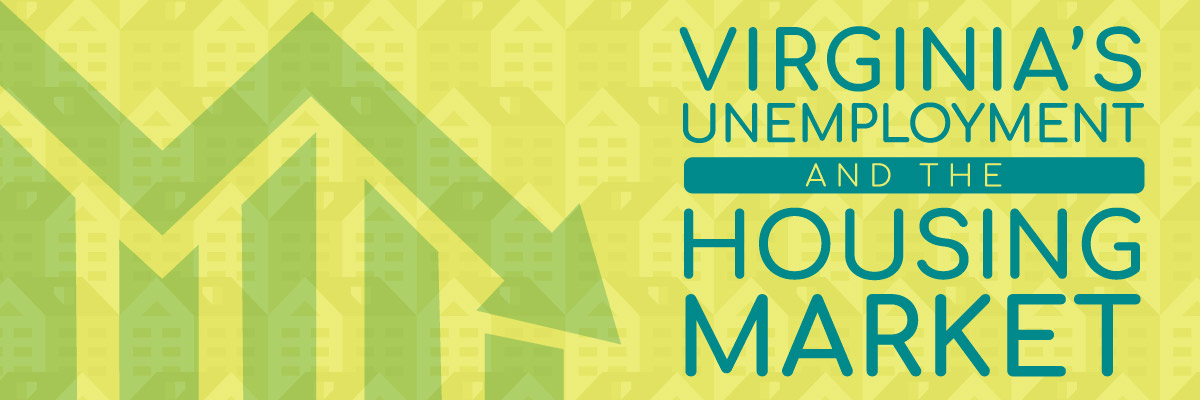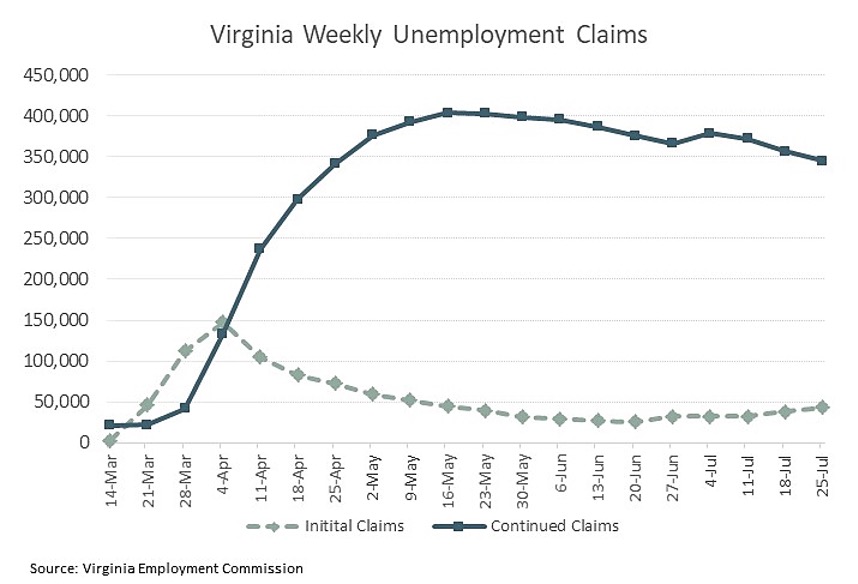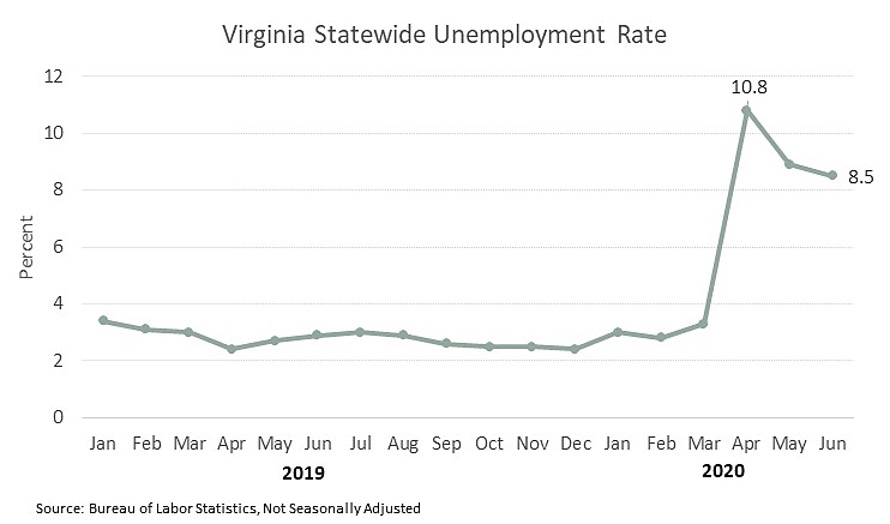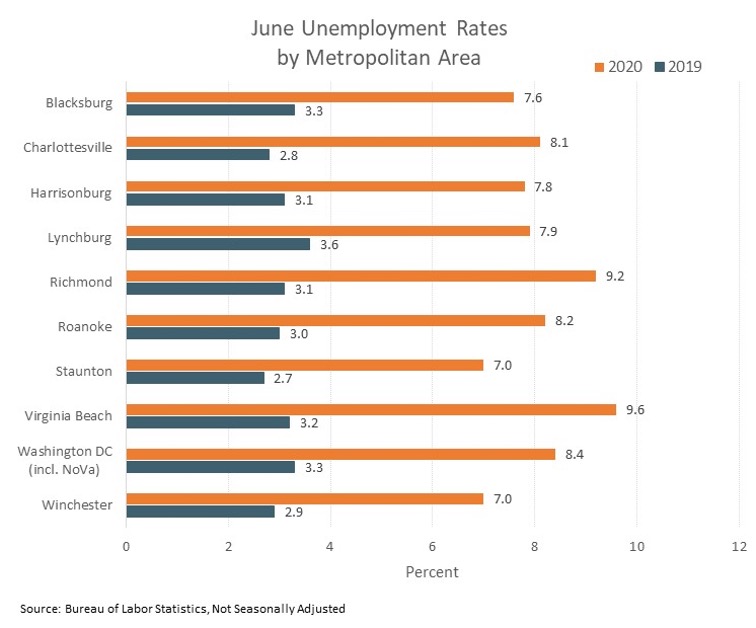What VA’s Unemployment Rates Mean for the Housing Market
August 6, 2020
 Job growth is a key driver of the demand for housing in Virginia. Conversely, job or income loss—or the fear of job or income loss—can lead to a decline in housing market activity. In the current economic environment, tracking unemployment across the State is important for determining the outlook for Virginia’s housing market.
Job growth is a key driver of the demand for housing in Virginia. Conversely, job or income loss—or the fear of job or income loss—can lead to a decline in housing market activity. In the current economic environment, tracking unemployment across the State is important for determining the outlook for Virginia’s housing market.
In late March, as the COVID-19 pandemic began and the Governor of Virginia issued stay-at-home directives, businesses closed and claims for unemployment benefits began to surge. Prior to COVID-19, an average of about 2,000 Virginians applied for unemployment benefits each week. In late March and early April, the weekly initial claims for unemployment benefits surged to over 100,000, peaking at 147,359 in the week ending April 4. The number of new claims for unemployment declined steadily each week until July 11 when the numbers began to tick up slightly.
While the initial claims data are helpful, trends in the continuing unemployment claims are a more important measure of the state of unemployment in the Commonwealth. In the week ending July 25, approximately 345,000 Virginians were receiving continued unemployment benefits, meaning that they were receiving benefits for more than one week. The number of continued claims has begun to flatten out but still remains extremely high by historic standards.

he statewide unemployment rate peaked at 10.8 percent in April. While the unemployment rate has declined steadily since that time, the rate remains elevated compared to the pre-COVID-19 levels. For example, in June 2020, Virginia’s unemployment rate was 8.5 percent compared to 2.9 percent back in June 2019.


Before the COVID-19 impact and current economic downturn, unemployment rates throughout the state were at very low levels. In June 2019, unemployment rates were around 3 percent in most metropolitan areas. There have been dramatic increases across the regions. Unemployment rates remain highest in the state’s largest employment centers. In June 2010, the unemployment rates were 9.6 percent and 9.2 percent in the Virginia Beach and Richmond metro areas, respectively. In the Washington DC region, which includes Northern Virginia, the June 2020 unemployment rate was 8.4 percent.
The economic recovery, which began in May, has shown signs of slowing. Economic conditions will likely continue to improve through the fall, but there will likely be bumps along the way. While the state’s housing market has demonstrated a strong V-shaped rebound early this summer, the overall economy is likely to follow more of a W- or Nike “swoosh”-shaped recovery. Full economic recovery and a return to a more typical unemployment rate is likely not until at least 2021.
You might also like…
5 Key Takeaways from the NAHREP 2023 State of Hispanic Homeownership Report
By Sejal Naik - April 17, 2024
In March 2024, the National Association of Hispanic Real Estate Professionals (NAHREP) released its 2023 State of Hispanic Homeownership Report. Using data from surveys conducted by various public… Read More
3 Multifamily Market Trends from the First Quarter
By Dominique Fair - April 16, 2024
For the last three years, the multifamily market has seen high demand, double digit rent growth, and increased construction to meet demand. These trends are expected to shift… Read More
Virginia’s Housing Market Sees Largest Influx of New Listings Since 2021
By Robin Spensieri - March 29, 2024
According to the February 2024 Virginia Home Sales Report released by Virginia REALTORS®, pace in Virginia’s housing market picked up last month. There were 6,733 homes sold statewide in February,… Read More